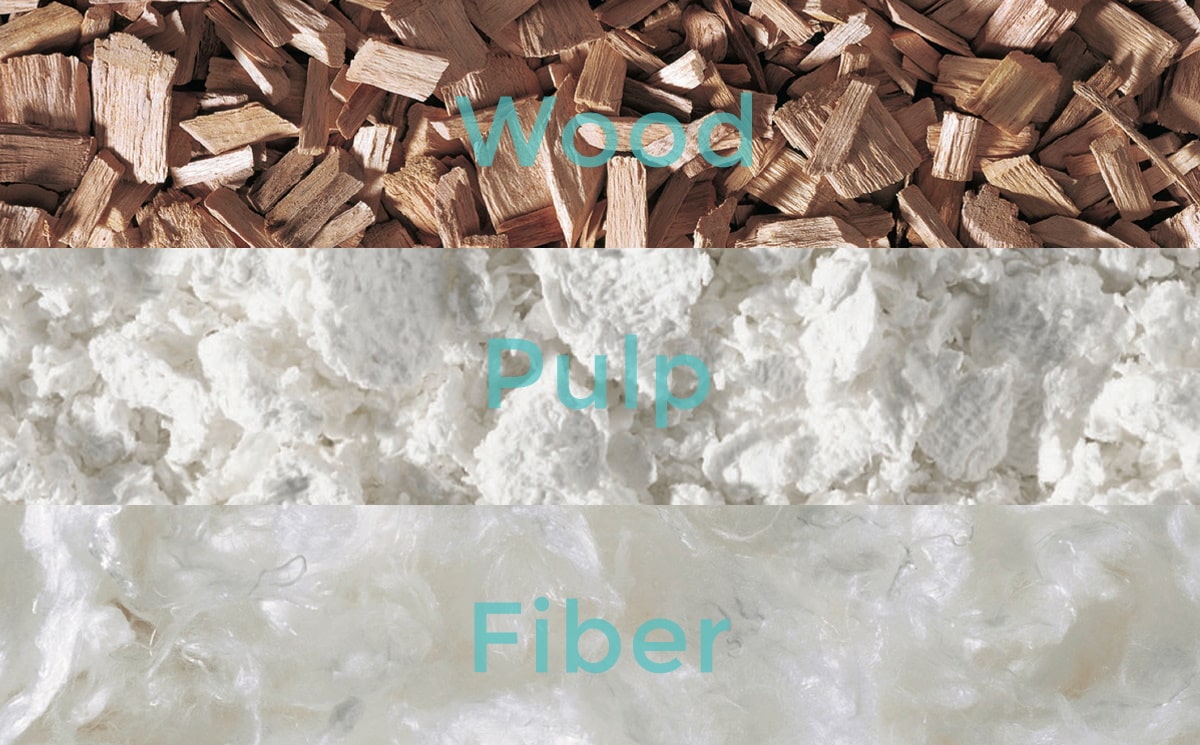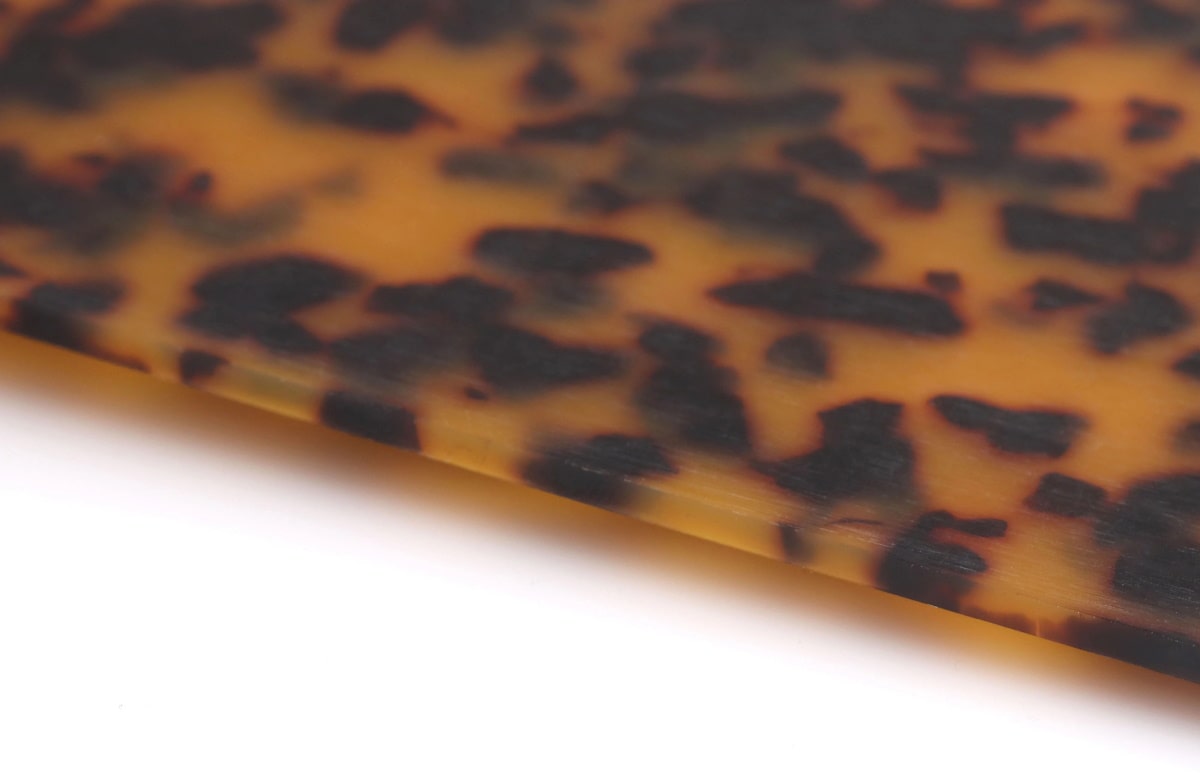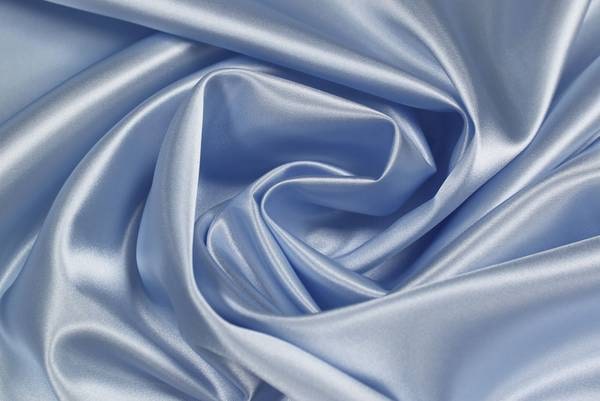Acetate vs. Plastic Frames
Take a look at your glasses, what are they made of?
You guessed it, we’re discussing frame material today and focusing on a kick-butt semi-synthetic material called acetate.
Acetate is a fascinating material to learn about, so welcome to the rabbit hole! We’ll be discussing their history, how they’re made, and what makes acetate so darn great for eyeglass frames.
Let’s learn all about acetate frames and how they compare to their sibling, plastic.
What is acetate and how is it made?
Wondering how acetate is made? Get your white coat on, we’re getting scientific.
In plants such as cotton and woody trees you’ll find a compound structure called cellulose. Cellulose is a fibrous biopolymer with a tough texture for maintaining the structure of plants. Cellulose fibers are extracted from plants and spun with acetic acid to create acetate.
Freshly combined and spun acetate looks like a thick, dough-like substance at this stage, ready for coloring and molding. (Note that because there is an extraction process, it is technically considered a man-made or semi-synthetic material despite the plant-based ingredients).
The coloring process often depends on how large the batch is and how detailed the color is. For example, large batches will usually be dyed with metal rollers in big sheets, while small batches can be hand-dyed.
Now that the color has been added, the gooey acetate is ready to be hardened into blocks. This is where it gets kind of cool, the acetate blocks can be chopped up into lots of tiny chips. These colored chips can then be melted together to create different patterns, especially tortoiseshell.
The colored and patterned acetate can then be made into sheets, ready to be cut, shaped, and polished into glasses frames.
What’s the history of acetate frames?
Acetate actually has a pretty long history compared to other synthetic and semi-synthetic fibers, coming in at the second oldest under rayon. However, there were a good few decades before acetate graced faces in the form of glasses, so let’s lay the groundwork.
Way back in the 1800s chemists tinkered around with cellulose (the process of extracting cellulose fibers from plants was already underway) with acetic acid to make acetate.
In the early 1900s, the Swiss chemist Camille Dreyfus with help from his brother Henri got to work experimenting with acetate for various uses. This is how acetate found its way to Hollywood for use as film, but it was also growing in popularity as a lacquer to be used on aircraft.
After the war somewhat halted the experimentation with acetate, curiosity returned and it was made into fabrics that would have a huge impact on the textile industry. It was found that acetate fabric was remarkably similar to silk in luster, feel, and movement, but it was far more durable than real silk and can hold brilliant colors.
Fast-forward to the 1940s when acetate was finally being used for glasses frames as a reaction to the failure of plastic. It was found that acetate frames were lighter, more comfortable, more flexible, and far more durable than the plastic frames previously used. What’s more, the colors applied to acetate frames were brighter too!
What are the benefits of acetate frames?
1. Acetate is eco-friendly (ish)
Compared to plastic, acetate is far more eco-friendly. While plastic stays around forever, leaching toxins into the soil and atmosphere, acetate will biodegrade far more easily. That said, it’s not a completely eco-friendly material.
Chemicals are often added to acetate to boost strength and melting-point (acetate is a thermo-plastic meaning it will melt under heat then harden again). Depending on whose processing the acetate and what chemicals are used, it can pose risks to the environment like plastic.
Speaking of eco-friendly glasses, don’t just toss out your old ones, donate them! Check out our easy guide to donating glasses here.
2. Acetate is lightweight
Acetate is a light material that feels comfortable on the face and won’t give you those dents on your nose and pinch points behind the ears. When you’re wearing glasses everyday, you don’t want to be dealing with headaches and strain.
3. Acetate won’t irritate you
You might not think of glasses as an irritant, but it happens! Some people are really sensitive to metals, even premium metals used in eyewear, while others are sensitive to petroleum-based materials. This can cause itchy and sore reactions in the skin, not ideal when the irritant is sitting smack-bam on your face. Acetate, on the other hand, is hypoallergenic and won’t irritate sensitive skin.
4. Acetate is hardy and tough yet flexible
One of the best features of acetate is that it is durable and won’t snap or crumble like plastic materials can. If you’re rough with your glasses (tossing them onto the nightstand or throwing them on the table before a shower? Guilty!) never fear. Acetate is flexible and bendable under pressure thanks to its fibrous structure and thermoplasticity.
How do acetate frames compare to plastic frames?
By now, plastic is treated with a slight side-eye, as it can have some pretty nasty effects on the planet due to being made with petroleum. Whilst some plastic frames can be recycled or donated to be kept out of landfill – acetate frames tend to be a more eco-conscious choice since they do biodegrade over time.
When it comes to color, acetate frames tend to fare better than plastic frames, since the color is integrated into the material as opposed to being sprayed or painted on like plastic. This means that some plastic frames may fade a little over time, especially at the ends of the arms.
Acetate frames are also more flexible than plastic frames, and are less likely to snap – making them better at withstanding hectic lifestyles.
However, plastic frames are great for those thicker, more bold styles while still remaining lightweight. Plastic frames also tend to be less expensive than acetate. This is great if you’re a student, on a tight budget, or you want multiple spares or aesthetics.
Plastic and acetate both win out over standard metal frames when it comes to hypoallergenic qualities, as there is no nickel lurking within to cause a reaction.
Other uses of acetate
Acetate is super widely used in the textile and fashion industry to create silk-like fabrics. It drapes well, looks luxurious without the hefty price tag, and holds color beautifully. However, acetate is found in more places that the specs store and your wardrobe, it is also used for:
- Furnishings and upholstery fabrics
- Cleaning supplies
- Cosmetics
- Medical products
- Tool handles
- Food industry equipment such as display cases
- Cigarette filters
- Computer storage
Tips for choosing your acetate frames
Okay, we’ve reached the truly fun part, choosing frames!
We’re super excited about our collection of acetate frames here at Mouqy, as there’s a color and shape for everyone. To keep you from going cross-eyed under the pressure of the decision, here are a few tips to follow to help narrow down the options.
1. Make the most of color
Sure, you may be leaning toward a sleek pair of clear frames, and that’s a fine choice, but don’t discount color. One of the best features of acetate is that it makes color truly pop.
You could choose a clear, neutral, or even rimless pair for your everyday look and a colored acetate pair for when you want a more statement-making aesthetic. What about the cool-toned blue June or the cherry red Giselle?
2. Consider your face shape
Knowing your face shape and what flatters it most is a key factor in choosing a pair of glasses that you’ll adore.
We have a comprehensive guide for picking glasses for your face shape, as well as guides for individual face shapes.
3. Just try them on!
You’ll never truly know if your acetate frames are going to work for you until you see them on your face. You don’t need to sneak into a store to do this, as we’ve got a brilliant online tool that does the trick in the comfort of home (or on the d-low at work!).
Use our Virtual Try-On tool to experiment with any and all frames to find the ones that make your heart tingle.

Written by:
Shu Kie













